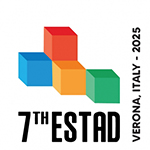Speaker
Description
Non-oriented electrical steel is widely applied as core material for several electrical machines, such as generators or electric motors due to its great soft magnetic properties. Besides grain size, precipitates, defects and grain orientation, non-metallic inclusions (NMI) also have a decisive effect on the magnetic properties of non-oriented electrical steel. Inclusions not only inhibit grain growth, cause lattice distortion, but also hinder domain wall motion and thereby deteriorate the magnetic properties of the steel.
This study investigates the change in the inclusion landscape of non-oriented electrical steel over different production steps. Therefore, industry samples from the ladle furnace, Ruhrstahl Heraeus (RH) plant, tundish, mold, slab, hot rolled sheet as well as cold rolled sheet were analyzed using automated SEM/EDS measurements. The detected NMIs of each sample were compared in regard of chemical composition, number per mm2 and mean equivalent circular diameter (ECD). Additionally, laboratory trials in a resistance-heated Tammann-type furnace with raw material from industry (hot rolled sheet) were carried out, examining the influence of rare earth elements (Ce and La) on the inclusion landscape.
Concerning the industry samples, the number of NMIs per mm2 diminishes with ongoing processing until the final product. Furthermore, a slight increase in the mean ECD is observed. The distribution of NMI classes changed from primarily oxides in the ladle furnace sample to comparable amounts of sulfides, nitrides, oxide-sulfides and nitride-sulfides in the final product. The laboratory samples alloyed with Ce and La respectively showed a reduction in NMIs per mm2 compared to the input material. Moreover, the mean ECD increased in both cases, although the increase was more pronounced with La. The reduction in number per mm2 and the increase in ECD suggest an improvement of the magnetic properties.
